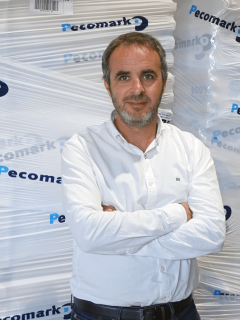For a logistics manager, the daily objective is to ensure that all operations run smoothly, i.e. from the production phase of the product to its transport, packaging and storage.
If you’re in this role, the term ‘logistics flows’ is more likely to ring a bell in your head than Bad Bunny’s songs on Spotify.
Because optimising them allows you to increase productivity in your value chain. In this article, we tell you the different types of logistic flows, as well as the keys to get the most out of them on a daily basis.
What are the different types of logistics flows?
First of all, we will differentiate between internal and external logistics flows.
- Internal logistic flows, also known as “production flows”, include all activities related to the production network of the product, i.e.also known as “production flows”, include all activities related to the production network of the product, i.e. the movement of raw materials, components, processing, manufacturing and handling processes.
- External logistics flows group two types of flows: on the one hand, supply flows, i.e. everything related to the movement of materials and consumables related to the production of products; on the other hand, distribution flows, i.e. the movement of finished products from the warehouse to the final customer.
But how are these flows organised? We will tell you about the different strategies to put your warehouse in order.
- Push flows: products are manufactured according to the demand expected by the company.
- Pull flows: products are only produced if there is a specific demand from a customer.
- Flows just-in-time: raw materials and/or finished products are only supplied to the company as soon as there is a sales order.
- Synchronous flowswith this strategy, raw materials and components are ordered as the product is produced.
However, it is up to the logistics manager to analyse the benefits of each of these strategies, and to choose the one that best suits his company’s value chain, in order to ensure smooth and seamless flow management.
Why optimise your logistics flows?
Because good management of your flows allows you to:
- An increase in the productivity of your logistics function and, in general, of your company. The better your logistics flows are managed, the more efficient your company will be in production and distribution.
- Better inventory management. By optimising your flows, you avoid the risks of overstocking or stock-outs.
- A reduction in waste .. By clearly tracing the path your products take, from supply to delivery, you will be able to identify stages where you waste resources (whether financial, human or material).
- Cost reduction. Optimising the management of these flows means identifying waste or loss of performance, which will lead you to identify new areas in which to invest your company’s budget.
- A better customer experience. With truly optimised logistics flows, your products are delivered in an optimal way. optimally Enough to satisfy customers who are increasingly concerned about the quality of the services offered to them!
Discover Packaging to automate intralogistics: get a more efficient warehouse
How to optimise the management of your logistics flows?
Discover now some techniques and tools that will allow you to improve your logistics organisation and optimise the management of your daily flows.
1.- Map your logistical flows
To do this, you should use the value stream mapping technique. It consists of representing in a diagram the different steps and processes involved that you use in your company to create and distribute your products.
It is thanks to this mapping that you will stand out in particular:
- Production times: order preparation, transport and distribution.
- Quality throughout the supply chain: avoiding order errors, damaged products and/or manufacturing defects.
- The use of the resources it performs: financial resources, raw materials, human resources.
- The information flows necessary to keep your supply chain to keep your supply chain running.
Once the flows are mapped out, it is possible to identify the elements that can be optimised in the value chain..
For example, you can detect productivity problems in the transport phase (with very long delivery times) and decide to launch a tender to find a more efficient transport provider.
Or you might detect that your warehouse is making mistakes during the picking picking phase and then you decide to review the picking processes. picking processes to limit these errors.
2.-Use technology to better track and manage your logistics flows.
Today’s logistics and supply chain technology can also be of great help in managing daily flows.
As a first step, it is recommended to install an ERP (or Enterprise Resource Planning). A software that allows you to manage all the activities in your value chain, from administration to product distribution, purchasing, maintenance or transport.from administration to product distribution, from purchasing to maintenance and transport.
You can then acquire a WMS module (Warehouse Management System) module, which will allow you to track your inventory and therefore enable you to trace your physical flows from end to end.
Finally, you can equip yourself with a TMS (Transport Management System) that will allow you to track and optimise your freight transport flows, to ensure an optimal transport experience. experience customer experience at the end of the supply chain.
3.-Automate part of your logistics operations
Another key to a better management of logistics flows is the automation or semi-automation of some of these processes, as they can help you to optimise and increase the rate of production or distribution. can help you optimise and increase the production or distribution rate of your value chain. of your value chain.
For example, you may decide to to install packaging systems or machines in your warehouses, which helps operators to be more productive.. Strapping machines o strapping machineswill be valuable allies to help your operators gain in performance.
It is likely that in the near rather than distant future, warehouse technologies will continue to increase and logistics managers will be able to focus their efforts on improving flow, being more productive and delivering an end-to-end controlled customer experience.














